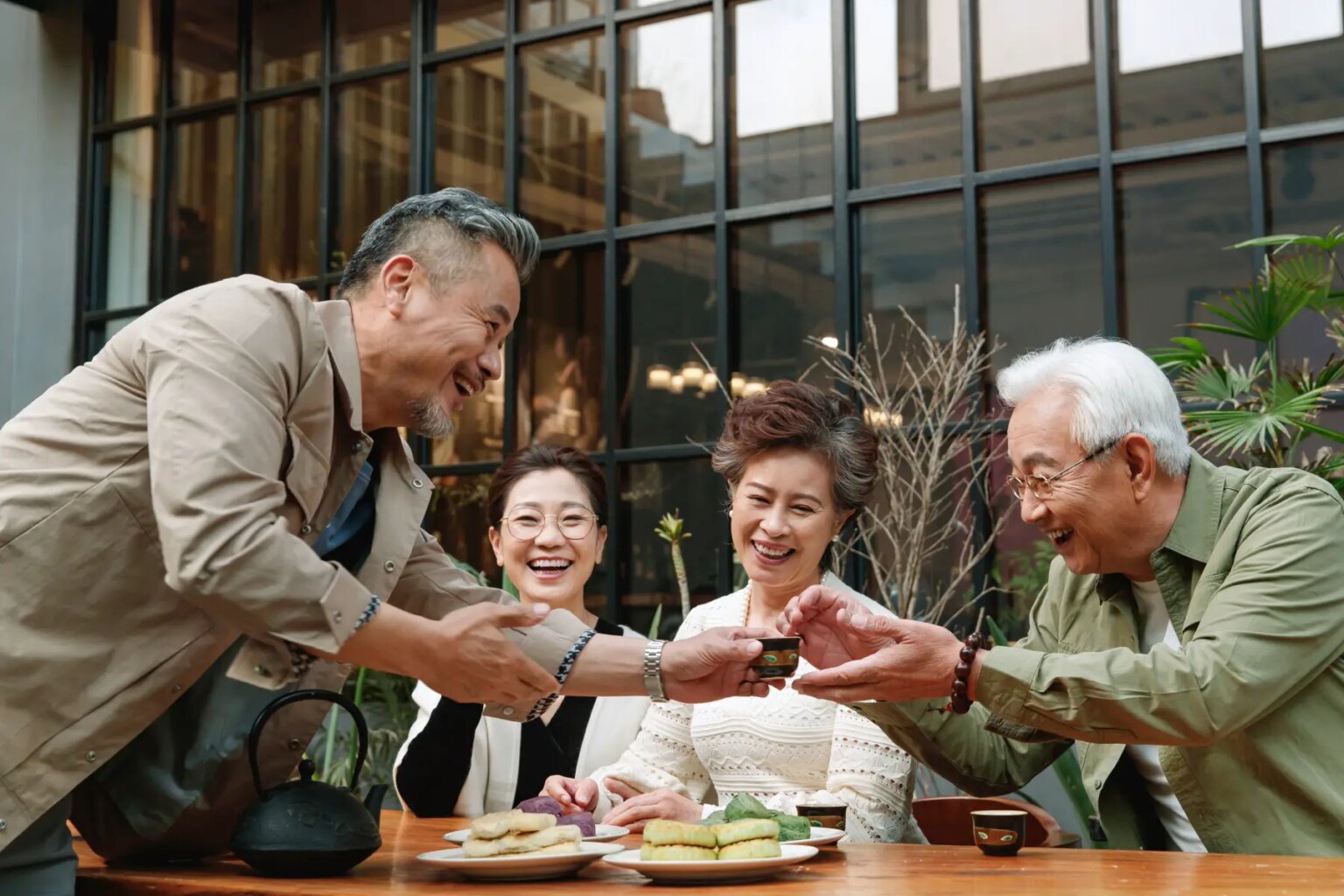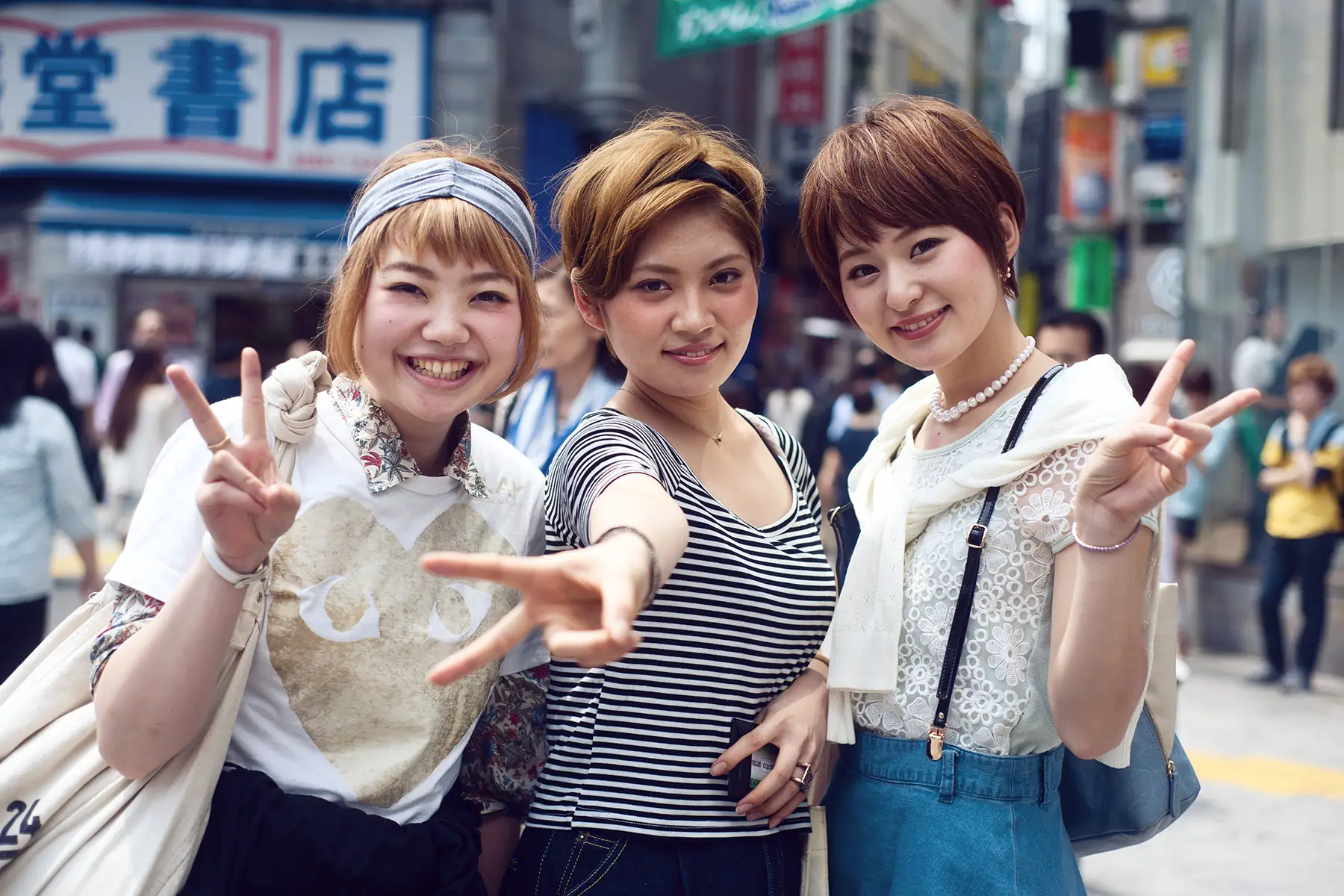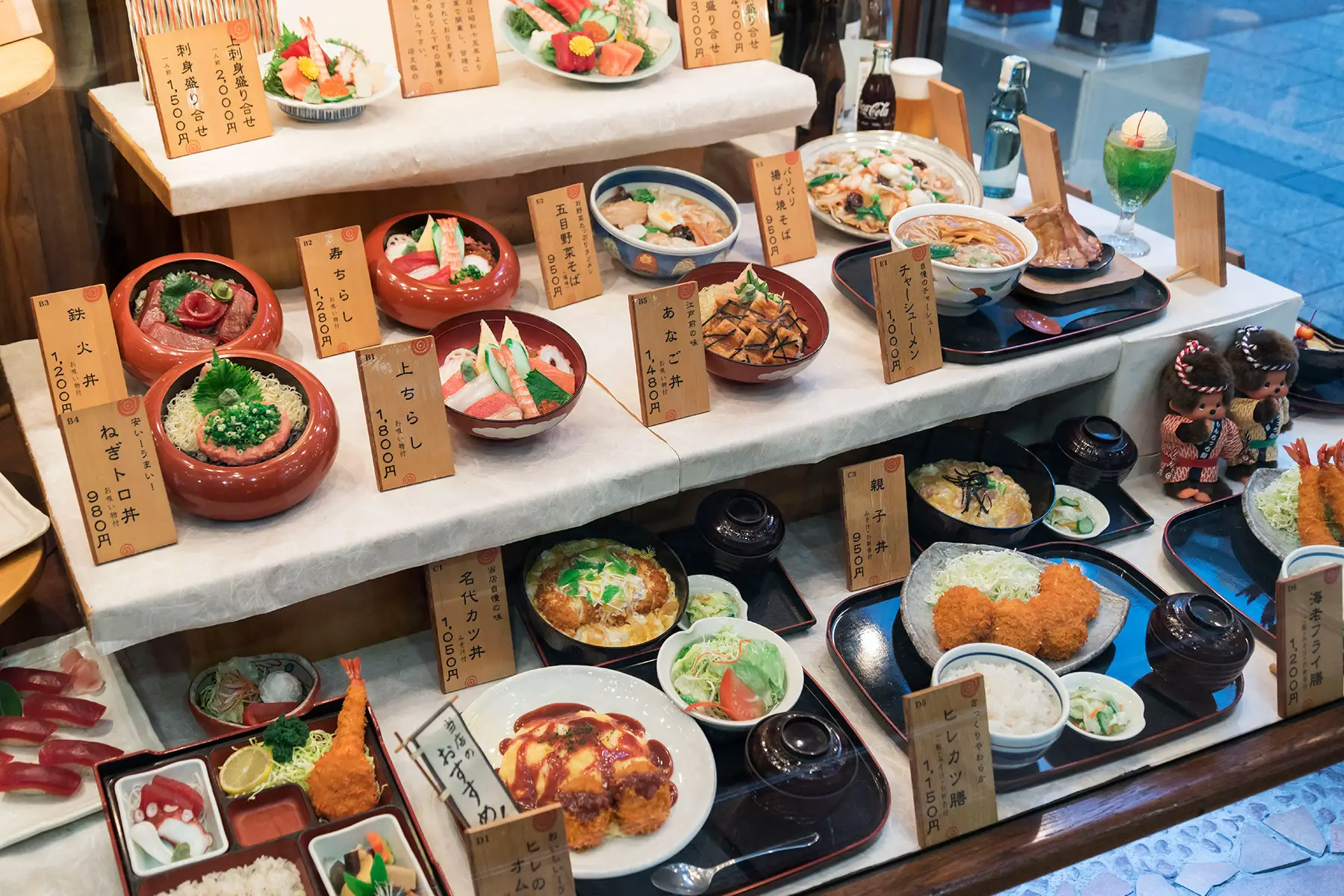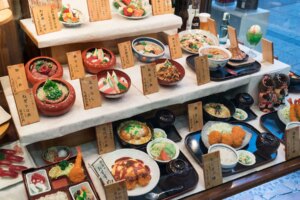Japan is a unique country that is rich in culture and tradition. Therefore, becoming accustomed to different social norms and behaviors can be an enriching experience.
However, it’s important to avoid misunderstandings and prepare for a whole range of social situations – from dating and dining to working and beyond. So, this article covers the following:
- Japanese culture and society
- Gender roles in Japan
- Meeting and greeting others in Japan
- Conversation and communication
- Clothing and dress code
- Dining etiquette in Japan
- Socializing in Japan
- Relationships in Japan
- Japanese celebrations
- Work and Japanese business culture
- Shopping and services in Japan
- Regional variations
- Useful resources
Japanese culture and society
Japan has a distinct national culture filled with contrasts. For instance, while the country has many customs and ancient traditions, it is also very forward-thinking and embraces new technologies.
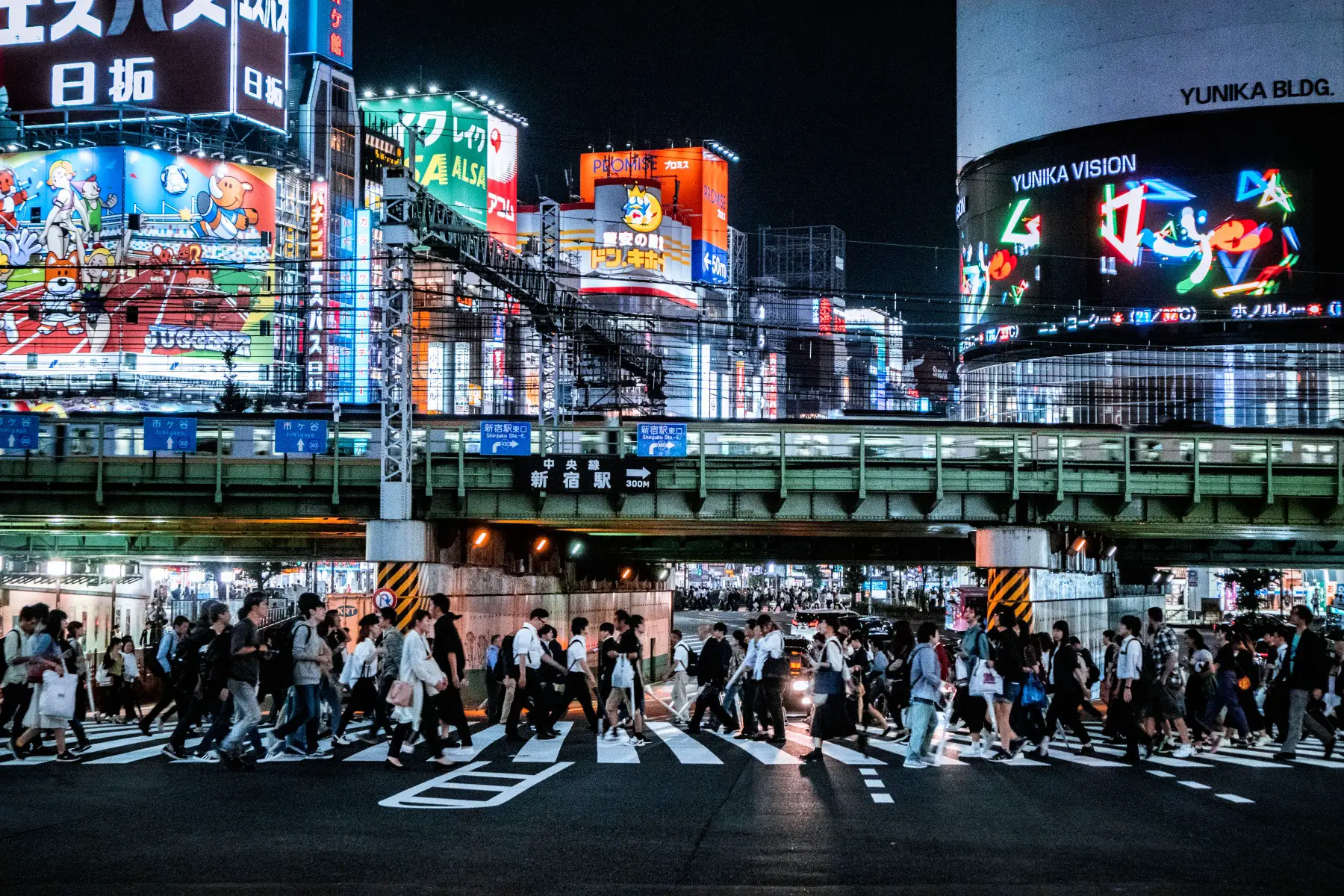
Japan has its own language, religion, and cuisine, along with many cultural forms only found on its shores. This makes it a fascinating destination for expats looking to relocate.
Japan is also more diverse than many people realize. It comprises four main islands (and over 14,000 smaller ones) that divide into eight regions and 47 prefectures (47都道府県). As of 2013, the population stood at nearly 125 million.
Over 98% of citizens in the country speak the national Japanese language (日本語), although several regional dialects still survive. These include Ryukuan (琉球民族), Okinawan (うちなーぐち), and Ainu (アイヌ). Around 1% of the population also speaks other minority languages, such as Chinese, Korean, and Filipino. Although the English-speaking population has grown recently, Japan ranks 80th in the 2022 English Proficiency Index.
Shintō (神道) and Buddhism (仏教) are the two biggest religions in Japan, although many view them more as philosophies than religions.
According to the Statistical Bureau of Japan (統計局) (PDF in Japanese), 69% of the population practices Shintō and 66.7% are Buddhists, while 7.7% identify with other religions, including Christianity and Islam.
Social class, politics, and family
Japan is a hierarchical society where educational achievement plays a key role in status. Almost two-thirds (65%) of residents are middle class, which is above the Organisation for Economic Co-operation and Development (OECD) average of 61%. Meanwhile, 8% are upper class, and 27% are working/lower class.
Centrist conservative politics has dominated Japan since the mid-20th century, and while politics is important, people do not often discuss it openly. According to the 2021 World Values Survey, attachment to family and respect for authority is also important.
However, most Japanese people do not feel inclined to take care of their parents as they get older. The survey also found that the Japanese value security more than freedom.
A controversial and culturally sensitive topic in Japanese society is the historic marginalization of South Koreans due to past political conflicts.
The Amnesty International Report 2022/3 highlights continuing discrimination against this community and Human Rights Watch has also noted poor treatment of asylum-seekers, with only 202 (out of 3,772) applicants gaining refugee status in 2022.
However, a significant change is happening within the younger generation with many positive interactions and shared experiences through music and entertainment.
Gender roles in Japan
Women in society
Women had a fairly subordinate role in Japanese society up until WWII. However, the 1947 Constitution established gender equality in areas such as employment and property and began to change the gender landscape in the country.
Nowadays, women make up 44.6% of the Japanese workforce, which is roughly the same as the OECD and regional East Asian averages.
However, despite this move towards gender equality, Japan still maintains a low ranking of 116 out of 146 countries in the World Economic Forum’s 2022 Global Gender Gap Report (GGGR). This is remarkably low for a country that has the third-highest gross domestic product (GDP) in the world.
Although many Japanese women have entered the labor market, the country scores very poorly when it comes to women in senior positions. In fact, around 70% of women in Japan are doing part-time or informal work. What’s more, they earn 75% less than men.
This is partly due to the persistence of traditional gender roles whereby society still views women as primary caregivers who carry out the majority of childcare and domestic duties. Japanese labor laws also make it difficult for women to take time out to give birth. And although the Japanese government has made moves to improve childcare leave for men, take-up remains low.
On the upside, violence against women is lower in Japan than in many other developed countries. Therefore, female expats relocating to the country can feel safe and shouldn’t face too many restrictions when it comes to making the most of their new life there.
LGBT+ community
In terms of LGBT+ rights (LGBT+の権利), Japan also lags behind other countries in many areas, scoring 64/100 on the LGBT Equality Index.
Same-sex marriage (同性婚) also remains prohibited and discrimination law do not protect citizens explicitly.
However, the public discourse is ongoing as the Nagoya District Court ruled this policy unconstitutional in a court case in 2023.
Meeting and greeting others in Japan
The most common greeting method in Japan is bowing (おじぎ). However, the style of the bow is slightly different depending on the situation. For instance, on formal occasions, people typically bow deeper than they would in more casual settings, such as greeting friends, where a light bow or nod of the head will suffice.
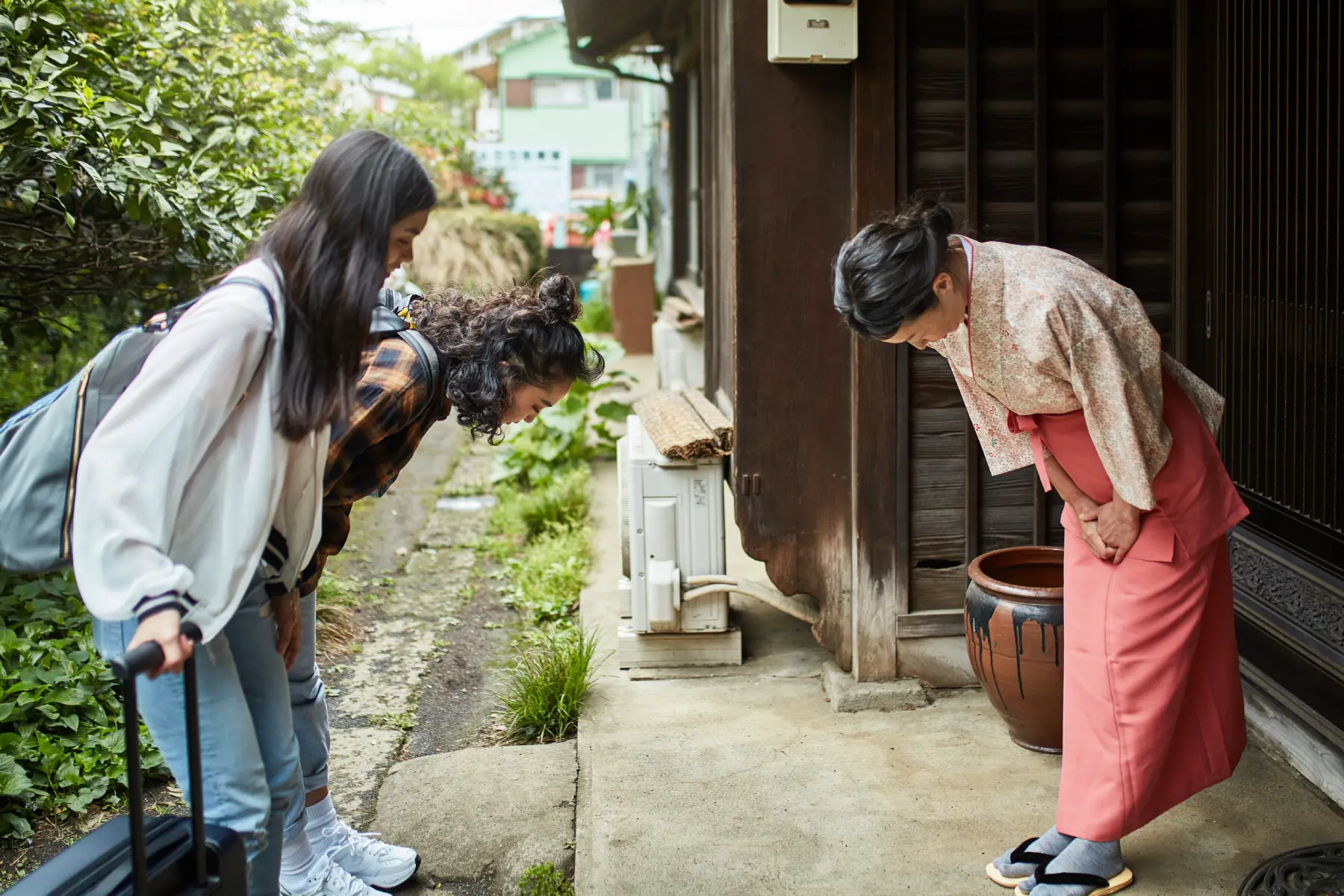
That said, Japanese people are aware that new arrivals are not so familiar with bowing customs and will not take offense if they get it wrong. If you are unsure, you can always get away with a simple head nod.
Other than this, handshakes (握手) are another common informal greeting in Japan. Hugging and kissing, on the other hand, are not standard greeting methods, and people only do this if they know the other person well and are sure they will be okay with it.
When greeting people in Japan, you can say Hajimemashite (はじめまして, which means “nice to meet you”) or Yoroshiku onegaishimasu (よろしくお願いします), which means the same but is more suitable in formal situations.
Meanwhile, Konnichiwa (こんにちわ, meaning “hello/good day”) is a popular greeting among friends and informal connections. In terms of addressing people in conversation, you can either say san (~さん) after the surname in informal situations or sama (〜様) after the surname in more formal settings.
The Japanese place great importance on punctuality so you should take care not to be late for meetings of any sort. That said, it is acceptable to visit people in their homes even if you haven’t forewarned them, as they are generally polite and welcoming.
However, if someone invites you to their house, be sure to turn up on time if it has been specified, and don’t bring any uninvited guests.
Conversation and communication
The Japanese generally have a very polite and reserved communication style.
It is good to be aware that many people use indirect communication where they might try to disguise their true feelings or want to avoid offending others by saying outright no (いいえ, Īe). For example, in business settings, you might hear, Orikaeshi go renraku itashimasu (折り返しご連絡いたします), which means “I’ll get back to you on that.”

Local expert
Hidemi Linuma
Insider tip
In social settings, it’s also acceptable to say Chotto isogashīdesu (ちょっと忙しいです), meaning “I’m a bit busy,” or simply, Mou yotei ga haitte imasu (もう予定が入っています), translating into “I have prior engagements.” These responses will not be considered rude.
Notably, politeness is so important in Japan that there are actually three distinct levels of polite speech:
- Teinei go (丁寧語): Meaning “polite language”, which is using the right terms and phrases when communicating
- Sonkei go (尊敬語): Meaning “respectful language”, which is used to speak highly of others
- Kenjo go (謙譲語): Meaning “humble language”, where people speak modestly about themselves or their group
Although nobody will be expecting you to quickly master polite Japanese speech, there is some basic Japanese etiquette that newcomers can take on board. For example, they should avoid speaking loudly in public places and interrupting people when they are speaking, as this comes across as rude. In Japan, it is proper to wait silently until it is your turn to speak.
Popular topics of conversation
Popular topics of conversation include food (食べ物), hobbies (趣味), culture, travel (旅行), sport (スポーツ), and the weather (天気). Those to avoid, however, include politics (政治), religion, money (お金), or anything too personal. For this reason, you will find that people don’t start conversations with “How’s your love life been lately?”.
The Japanese are generally very humble, so you should avoid showering them with compliments as it will likely embarrass them.
Written communication is popular in Japan and people often write emails to one another. The overall tone is similar to speech and remains polite and formal. For formal letters or seasonal wishes, you can start with greetings, such as Haikei (拝啓, meaning “dear”), and end with Keigu (敬具, “best wishes”) or even Zenryaku (前略, literally translating as “omitting preliminary remarks”) and Sousou (草々, “written in a hurry”).
However, these are all too formal to use in daily or casual emails.
Body language
The Japanese use a lot of body language and non-verbal cues, such as facial expressions, when they communicate.
Because people generally try to avoid offending others or being negative with their words, they will sometimes use visual markers instead. For example, frowning is a common sign of disapproval. Another common expression is gently waving the palm of your hand outwards from side to side while smiling to say “no” or refuse something.
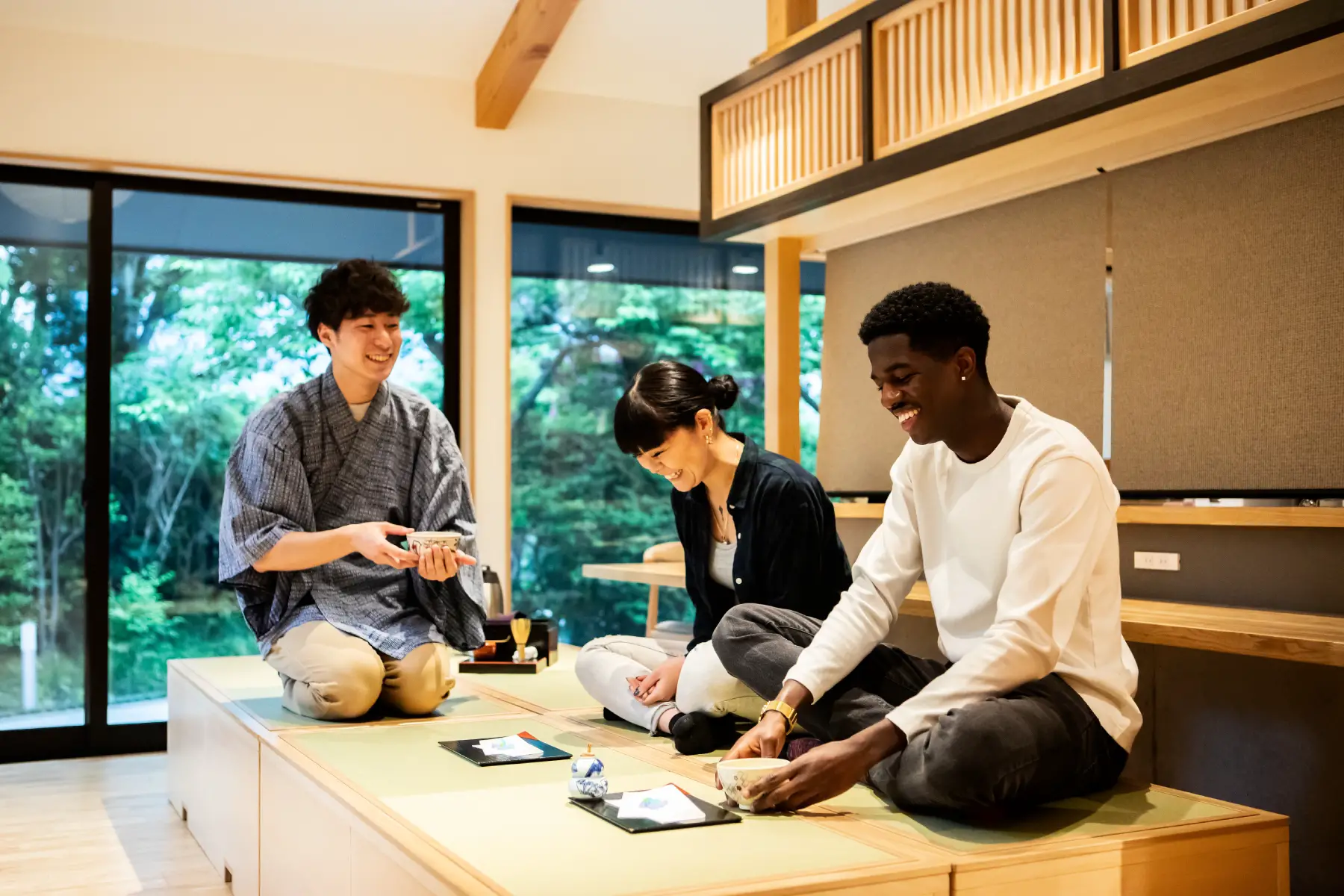
While eye contact is an important part of Japanese etiquette, you should use it sparingly. For instance, it is good to look someone in the eye when you greet them and then occasionally during a conversation.
However, prolonged eye contact can be interpreted as overly assertive or intimidating. When listening to someone else speak, it is also good to smile, nod occasionally to show that you are paying attention, and make occasional fleeting eye contact.
Other common gestures in Japan include making a circle with your thumb and index finger, while stretching the other fingers upwards, to say “okay.” Meanwhile, placing your hands together in front of you as if you are about to pray means “I’m sorry” or “please.”
Some gestures to avoid include:
- Pointing a finger at someone, as this is seen as rude
- Bearing the soles of your feet to someone, which is a sign of disrespect in Japanese culture
- Touching someone, even on the arm or shoulder. Physical contact in conversation is not the norm in Japan and people expect personal space, so you should maintain an arms-length distance.
Japanese humor
Comedy, particularly physical comedy, is popular in Japan and done in a silly or slapstick way. The two most popular comedy styles in Japan are:
- Manzai (漫才): A long-standing double-act format consisting of a silly character and a sensible character performing mostly physical routines
- Rakugo (落語): A more cerebral form of comedy that involves one person, often dressed in a kimono and kneeling on a cushion, telling a comic story or monologue
In addition to physical comedy and funny stories, other styles of humor that generally go down well in Japan include gentle satire, self-deprecating humor, absurdism, and clever puns or wordplay. That said, the latter might be trickier to pull off if you have a limited command of the Japanese language.
Styles of humor to avoid, on the other hand, are blue comedy or toilet humor (unless you know your audience), as well as anything too aggressive or belittling.
It is also important to bear in mind that, although the Japanese enjoy slapstick, it is not a good idea to start fooling around and knocking things over in people’s homes or public places.
Clothing and dress code
There are two broad dress styles in Japan:
- Traditional Japanese clothing (和服)
- Global-style clothing (洋服)
Traditional attire is based around the kimono (着物), which is a decorative body-length dress similar to a light dressing gown, worn by both men and women.
There are many different types of kimono, and they are often worn together with split-toed socks (足袋) and Japanese sandals (草履).
Business versus casual
Global fashion is also popular in modern-day Japan. Businesswear includes dark suits and smart shirts for men, and suits with either trousers or skirts together with high-heeled or flat shoes for women.
Casual clothing is typically smart and conservative and – depending on personal taste – often in dark or pastel colors. This might include trousers, jeans, shirts, t-shirts, pullovers, and smart shoes or sneakers.
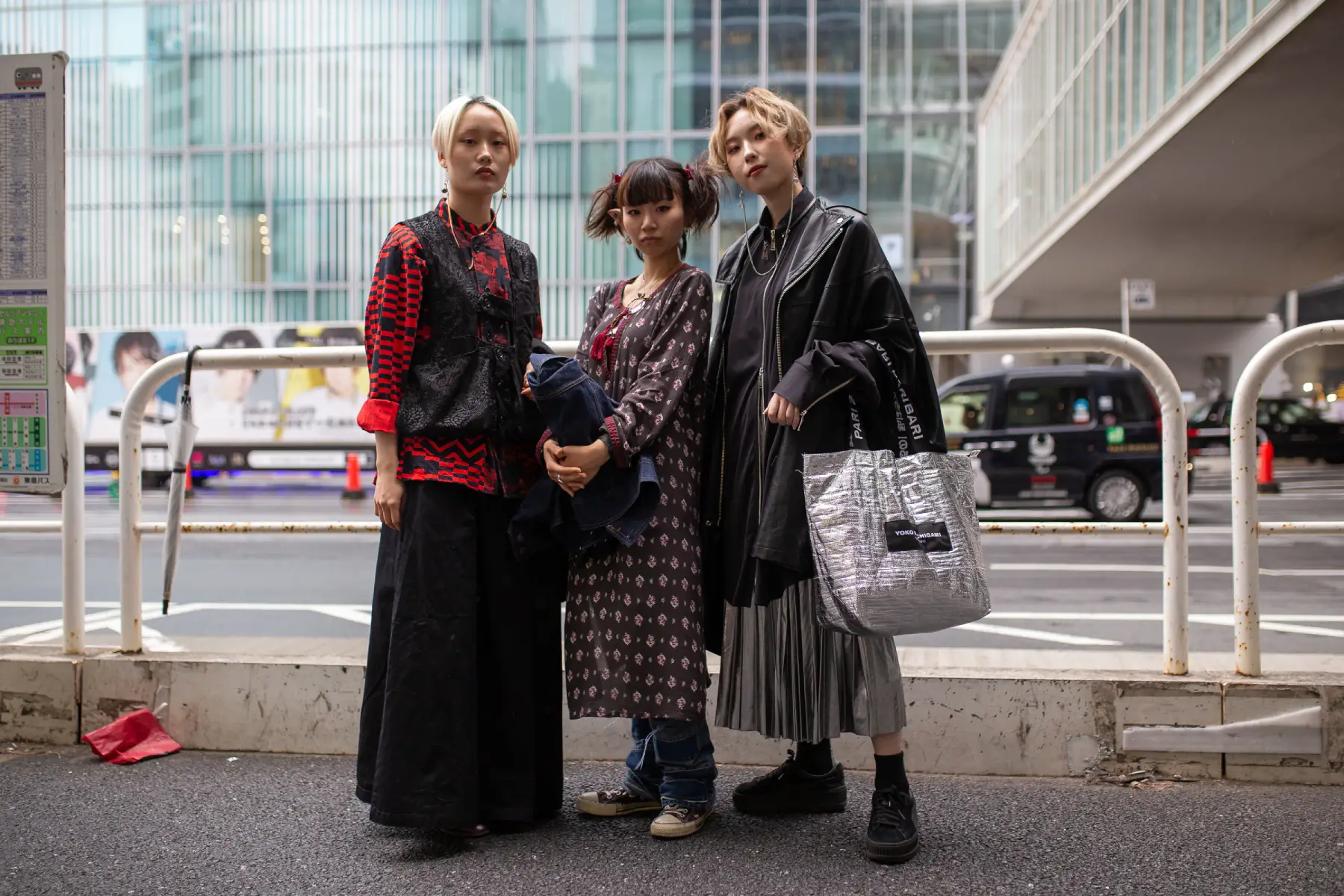
Notably, younger generations in Japan tend to steer clear of these conservative looks when it comes to fashion. For example, some prefer punk, goth, and bubblegum pop styles involving extremely bright colors, t-shirts bearing slogans, large boots such as Dr. Marten’s, accessories like jewelry and painted nails, and heavy makeup.
Hip-hop culture is also popular among sections of Japanese youth, especially in the bigger cities, so expect to see plenty of loose-fitting clothing.
Dressing up
Dressing up in Japan can involve either smart modern or traditional dress.
People tend to dress up for formal family occasions, dates, nights out, and visits to temples and shrines. When attending any occasion where you might be expected to dress up, you should avoid wearing anything too casual such as beach shorts, sandals, tatty jeans, and t-shirts.
Also, remember to take off your shoes and cover any visible tattoos for formal events or trips to religious buildings, expensive restaurants or clubs, and even bathing facilities.
In fact, door staff may even turn you away if you turn up exhibiting any tattoos.
Dining etiquette in Japan
When it comes to dining, Japanese etiquette is different from that of many other countries. However, you can find restaurants offering cuisines from many different countries.
Another thing to bear in mind is that, apart from cities with a street food culture such as Osaka (大阪), it is not common to see people eating on public transport or in the streets.
When dining at someone’s home or in a traditional Japanese restaurant, it is customary to take your shoes off at the entrance.
Table manners
Here are some other common Japanese table manners to follow:
- Wait to be seated by the host or waiter
- Use the towel (おしぼり) to wipe your hands but not your face
- Don’t start eating or drinking before others
- Pour drinks for others but don’t pour for yourself
- You can start a toast by raising your glass and saying kanpai (乾杯)
- Say itadakimasu (いただきます, which literally means “I humbly receive”) at the start of a meal and gochiso-sama deshita (ごちそうさまでした, meaning “it was delicious”) at the end
- Use chopsticks (箸) if provided; knives and forks are usually only used in restaurants that serve European or American cuisine, so avoid asking for them in Japanese restaurants
- If picking up food from shared dishes, use the opposite end of the chopsticks or have separate ones for sharing
- Return the chopsticks to their holders at the end of the meal
- It is fine to eat sushi (寿司) with your hands and drink miso soup (味噌汁) from the bowl (although you should use chopsticks for pieces of food in the soup)
- Slurping noodles is not rude, but a sign that you are enjoying the food
- If bowls of rice are provided, eat separate mouthfuls along with other food rather than mixing everything together
- Summon the waiter by gently waiving your hand or saying sumimasen (すみません, meaning “excuse me”)
- Crossing your index fingers to form an ‘X’ is the sign for the check, but it is such a local custom that Japanese people may be surprised by a newcomer using it
Socializing in Japan
Internationals have many opportunities to socialize with others in Japan.
Typical social venues such as restaurants, cafes, bars, galleries, museums, cinemas, concerts, festivals, and sports events or activities are great places to meet people.
You can also try a distinctly Japanese activity, such as visiting a temple, shrine, onsen, or ryokan (旅館 – a traditional Japanese inn) to mix with locals.
If you like to enjoy a tipple with your social activities, most venues serve alcohol. This ranges from beer to traditional Japanese beverages such as sake (日本酒). Japan’s alcohol consumption rates are eight liters of alcohol per person each year, which is below the OECD average of 9.2.
However, reports have suggested a higher-than-average concentration of heavy drinkers in Japan, especially among 15 to 39-year-olds.
Relationships in Japan
Although traditional Japanese society was based on parents picking out suitable partners for their children (which still happened until the 1960s), nowadays, dating in Japan is open-minded and initiated by partners.
People tend to meet through work, social activities, and more frequently via online dating apps and websites.

Notably, dating in Japan is typically quite a slow process, and people will go on a few dates to get to know each other over time. Physical contact is also kept to a minimum in the early stages, and any public displays of affection are usually limited to holding hands.
Things usually become more serious once one of the partners makes a declaration of love (告白). This is the point at which the relationship becomes official and you can expect to meet your significant other’s parents.
Because family is central to Japanese culture, you can also expect to attend a fair few social engagements involving relatives, which happens more in villages and rural communities than in big cities.
Japan’s marriage rate has been steadily declining since the 1970s and stood at 4.3 marriages per 1,000 inhabitants in 2021. That said, this is still above the EU average of 3.9.
Japan also ranks 44 out of 197 nations in the LGBT Equality Index, which is higher than some other Asian countries such as South Korea (65), Vietnam (79), and Singapore (80). That said, although attitudes are slowly liberalizing, Japan falls short in certain areas, such as same-sex marriage, which is still illegal.
Japanese celebrations
There are many different cultural festivals (祭) throughout the year in Japan. Many of these are local festivals that are specific to different cities, regions, or sometimes individual Shinto shrines.
Some of the big national celebrations include:
- New Year (正月): During the first three days of the year, where families gather to eat special meals and visit temples and shrines
- Doll Festival (ひな祭り): Annual festival to protect young girls from evil spirits, where doll figures are set up in the home. Girls dress up in kimonos and visit family to celebrate.
- Cherry Blossom Festival (花見): Annual viewing of cherry blossom trees blooming every springtime, where people gather in parks and have picnics
- Obon Festival (お盆): Three-day Buddhist festival in the summer involving dancing, hanging of lanterns, visiting graves, and leaving food offerings at temples
Japanese celebrations are varied in terms of content, and involve activities such as dancing, processions, cultural performances, family feasts, giving gifts, and visits to shrines and temples.
Notably, while Christian festivals such as Christmas and Easter are not hugely celebrated in Japan, they are becoming more popular, especially with more expats settling in the country. In fact, you can find European-style Christmas markets and illuminated street decorations in many cities, and several restaurants offering Christmas specials in December.
Birthdays in Japan
Birthday (誕生日) celebrations are a relatively new thing in Japan. To mark the occasion, young children sometimes have a party with a birthday cake topped with candles and receive presents.
Adults, on the other hand, may have a small party or arrange some birthday drinks or a celebratory meal.

Notably, Japan has some long-lasting traditions that center on newborn babies, such as:
- Seven days old (お七夜): A small family celebration where the baby’s name is written on a scroll
- One month old (お宮参り): The baby’s first visit to a Shinto shrine where a priest carries out a purification ceremony
- 100 days old (お食い初め,): A small family meal that includes soup, rice, vegetables, and red snapper
- One year old (初誕生): A celebration involving a large round mochi rice cake
Important milestones in Japan include 20th, 60th, 70th, 77th, 80th, 88th, and 90th birthdays.
You can wish someone a happy birthday in Japanese by saying otanjo-bi omedetou gozaimasu (お誕生日おめでとうございます). You can shorten this to otanjo-bi omedetou (お誕生日おめでとう) for close friends.
Gifts in Japan
Gift-giving is an important part of Japanese culture. In fact, when it comes to bestowing beautifully decorated presents, they are one of the most generous nations in the world. People often buy each other small gifts for birthdays and Christmas, even though this isn’t a traditional holiday in Japan.
Other common gift-giving occasions in Japan include:
- Ochugen (お中元): Summer gift given to close friends, and often from younger people to those who are older or of a higher social status (e.g. to parents or teachers), in early July
- Oseibo (お歳暮): Traditional winter gift to show gratitude to those close to you, usually around late November or December
- Orei/Okaeshi (お礼/お返し): A thank you gift if someone does something nice or invites you into their home
- Omiyage (お土産): Local gift from another place if you travel somewhere
- Valentine’s Day (バレンタインデー): People in Japan buy chocolates not just for romantic partners but also for platonic friends and colleagues. However, there are different types of chocolate for different types of recipients so make sure you buy the right ones!
- White Day (ホワイトデー): Celebrated on 14 March, those who were given a gift on Valentine’s Day return the gesture by reciprocating a gift of their own
Interestingly, it is not so common to bring gifts to a wedding. Instead, the bride and groom usually receive money offerings.
Generally speaking, suitable gifts include food, drinks, trinkets, jewelry, household items, clothing, flowers, and plants. However, you should avoid any flowers that are associated with funerals.
You should also avoid items that are sharp or highly flammable and anything that comes in quantities of four or nine, as these are considered to be unlucky in Japan.
Japanese gift-giving etiquette
Here are some important Japanese etiquette to remember when giving or receiving gifts:
- Both offerer and receiver should use two hands when exchanging the gift
- Avoid giving gifts in front of large groups of people, unless you have something for everyone
- Open gifts in private rather than in front of the person giving the gift
- Make sure you wrap a gift nicely
- Respond to a gift with a thank you letter, a phone call, or even a reciprocal gift

Local expert
Hidemi Linuma
Insider tip
You should modestly refuse the gift two or three times before accepting it, especially when it comes to financial or expensive presents. While it does not happen with every gift, it’s a way of showing respect.
Work and Japanese business culture
Business culture in Japan is very formal. Workers should dress smartly, be punctual, and use formal titles when addressing others in meetings. There are also certain customs to observe during business meetings. For instance, you should exchange business cards (名刺) at the start of the meeting, presenting your card with both hands. You should give your card with your right hand and receive theirs with your left hand.
Hierarchy dictates the order of seating during business meals, with the most senior person sitting at the head of the table furthest away from the door. The most senior person also raises a toast while the most junior person orders the drinks.
Although Japanese organizational structures are hierarchical, there is a lot of importance on consensus. Leaders are expected to bring teams together through collaboration rather than handing down decisions. For this reason, meetings can take time due to lengthy negotiation processes.
However, the final decision is usually the responsibility of one person or a small group of senior staff.
Employees in Japan tend to be very loyal, putting company interests before their own. As a result of this, there is a strong sense of collective identity in many Japanese organizations.
Building and maintaining relationships is also important, and businesses prefer to build long-lasting partnerships based on trust and familiarity. In fact, during special meetings they may even exchange gifts.
Shopping and services in Japan
Shopping is a popular pastime in Japan, and you will find malls that house everything from big-name brand stores to ¥100 budget stores (100円ショップ) in most of the big cities.
Good customer service is a vital component of the Japanese retail and service sector. In fact, there is even a word for it – omotenashi (おもてなし). Around 78% of businesses in Japan track customer service levels. You can expect staff to say irasshaimase (いらっしゃいませ, meaning “welcome”) when you enter a store, but there is no need to reply.

When it comes to shopping, basic Japanese etiquette involves keeping quiet and tidy. Therefore, don’t try to haggle in stores, as this is seen as a sign of disrespect and mistrust.
Moreover, if you are paying for goods in cash, place the money in the tray provided at the counter rather than handing it directly to the cashier. Also, don’t count your change as this indicates that you don’t trust the shop staff.
The Japanese are masters of queueing etiquette and will stand in queues for long periods without complaining. Therefore, pushing or jostling in queues will come across as very rude and aggressive.
Tipping in Japan
Tipping for services is a rarity in Japan. The country’s strong customer service culture ensures that businesses provide good service for a fair price.
Therefore, tipping indicates that the customer is surprised by the level of service and doesn’t think that the price reflects it.
That said, there are some exceptions to this, such as tipping tour guides and interpreters, where staff will usually indicate that tips are appreciated. Additionally, many ryokans (traditional Japanese inns) provide services where it is perfectly acceptable to tip.
If you do tip for a service in Japan, you should place the money in an envelope and hand it to the service provider rather than placing cash into their hands.
Regional variations
Japan is often portrayed as a homogenous country with a unified culture. But while it undoubtedly has distinct national cultural traits, it is remarkably diverse across its four main islands, eight regions, and 47 prefectures.
This goes beyond the political autonomy afforded to the prefectures. Each part of Japan has a unique twist on the country’s etiquette, norms, and traditions.
For example, there are many different takes on Japanese art forms and cuisine, as well as differences in local dialects; in particular, variations between two of the most prominent regions – Kanto (関東地方) and Kansai (関西地方).
You can see this clearly in the cuisine, with Kanto dishes containing pork while Kansai ones use beef.
Kansai has a strong regional identity built around the cities of Osaka, Kyoto (京都), and Kobe (神戸), which is generally less formal and hierarchical than Kantō. Then there is the Kyushu (九州) region in the southwest, which historically has been more influenced by neighboring Asian countries, giving shape to distinct local cultural practices and norms.
Therefore, if you are planning on moving to Japan, make sure that you do plenty of research into the area you are relocating to so you can best understand what to expect in terms of Japanese etiquette and culture.
Useful resources
- JapanGov – the official website of the Japanese government which provides information about visiting Japan, including safety tips, visa information, and more
- Travel Japan – the tourism website for Japan with articles about local culture and traditions
- Ministry of Foreign Affairs (MOFA) – provides information about Japanese culture and hospitality, featuring videos and guides
